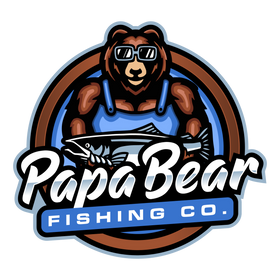If you’ve ever been out on the water, targeting sheepshead, you know how tricky these fish can be. Often found around bridges, pilings, and rock structures, they’re notorious for stealing bait and avoiding the hook. Their hard, toothy mouths and cautious feeding habits make them a challenging species to catch. But with the right techniques, gear, and knowledge, you can increase your success rate and land more sheepshead on your next fishing trip. Here's how!
1. Understand Their Habitat
Sheepshead are structure-loving fish, which means you’ll find them hanging around areas with plenty of cover and food. Some of their favorite spots include:
- Bridges and Pilings: These structures are rich with barnacles, crabs, and other crustaceans, which are sheepshead's primary food sources.
- Docks and Seawalls: Man-made structures are magnets for sheepshead, offering a buffet of crustaceans and mollusks.
- Rocky Reefs and Jetties: Natural rocky structures are also great places to target sheepshead, especially during winter when they move inshore to spawn.
Look for these areas and focus your efforts there, as they provide both cover for the fish and abundant food sources.
2. Choose the Right Gear
Catching sheepshead requires a careful balance between finesse and power. Here’s the gear you’ll need:
- Rod: A medium or medium-light spinning rod with a sensitive tip is ideal. Sheepshead bites are subtle, so you need a rod that can detect even the slightest nibble.
- Reel: A reel with a smooth drag system is essential, as sheepshead are powerful fighters, especially once hooked near structure. A 2500-3000 size spinning reel is perfect.
- Line: Use 10-20 lb braided line for its sensitivity and low stretch, which allows you to feel those delicate bites. Add a 2-3 foot fluorocarbon leader (15-20 lb test) to increase invisibility near the fish.
3. Master the Right Baits
Sheepshead are primarily crustacean eaters, so using the right bait is crucial to your success. Some of the best baits include:
- Fiddler Crabs: One of the most effective baits for sheepshead, as they closely mimic their natural food.
- Shrimp: Live or fresh shrimp work well, especially when fishing near docks or pilings.
- Oysters and Barnacles: Sheepshead are notorious for feeding on barnacles attached to structures. You can scrape barnacles into the water to attract them, then present your bait.
- Sand Fleas (Mole Crabs): A favorite food of sheepshead, especially along jetties and beaches.
When rigging your bait, use a small, sharp, and strong hook (size 1 or 1/0). Sheepshead have hard mouths, so sharp hooks increase your chances of penetrating their teethy jaws.
4. Use the Right Rig
Since sheepshead often feed close to structures, you’ll want to use a rig that minimizes snags while keeping your bait in the strike zone. Here are a few effective rigs:
- Carolina Rig: This classic rig works well for sheepshead. Use a ½ to 1 oz egg sinker, a small swivel, and a fluorocarbon leader (12-18 inches long) with a size 1/0 or 2/0 hook. This allows the bait to move naturally in the current while keeping it near the bottom.
- Drop Shot Rig: Use this when fishing in deeper water or stronger currents. This rig keeps your bait elevated off the bottom, which is useful when fishing around rocky areas or near pilings.
- Jig Head: For a more hands-on approach, a jig head tipped with shrimp or crab is an effective way to feel the bite and set the hook quickly.
5. Refine Your Technique
Catching sheepshead requires patience and skill. These fish are known for being bait thieves, so honing your technique is essential.
- Feel the Bite: Sheepshead bites are notoriously soft. When you feel a slight tap or your line suddenly goes slack, be ready to set the hook. Keep your finger on the line for extra sensitivity, and always stay alert.
- Set the Hook Fast: Sheepshead can steal bait in the blink of an eye, so a quick hook set is crucial. As soon as you detect a bite, reel in the slack and give a sharp upward tug on the rod to drive the hook into their bony mouths.
- Fish Close to Structure: Position your bait as close to the structure as possible without getting snagged. Sheepshead tend to feed along the edges of pilings and rocks, so staying in their strike zone will improve your chances.
6. Fish the Right Tides
Sheepshead are most active during moving tides, particularly the first and last few hours of the tide change. Aim to fish during:
- Incoming Tides: As the tide rises, sheepshead will move closer to structures to feed on barnacles, crabs, and other crustaceans dislodged by the current.
- Slack Tide: This period of slower water movement can also be productive, as sheepshead will often forage near structures without the hassle of strong currents.
7. Be Persistent and Adapt
Fishing for sheepshead can be frustrating at times due to their subtle bites and finicky feeding habits. If you’re not getting bites, try changing up your bait, adjusting your rig, or moving to a different spot. Often, small tweaks can make a big difference.

